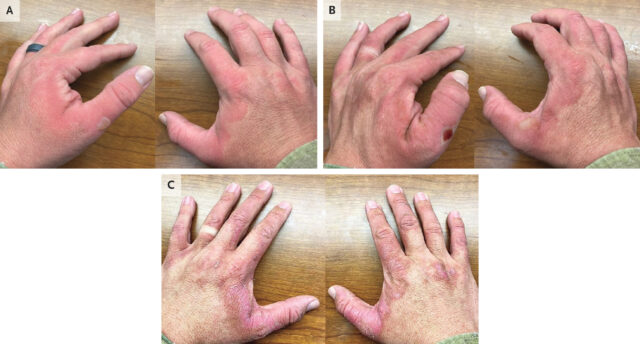If Margaritaville were a real place, there would definitely be a few dermatologists on site.
In a case of an often overlooked food preparation hazard, a 40-year-old man came to an allergy clinic in Texas with a severe, burning rash on both hands that had occurred two days earlier. A few days later it started to blister. And a few weeks after that the skin became dark and flaky. After several months, the skin on his hands finally returned to normal.
The culprit: lime juice and sunlight.
It turns out that just before he developed the nasty rash, the man had hand-squeezed a dozen limes and then gone to an outdoor soccer game without applying sunscreen. His doctors diagnosed the man's rash as a classic case of phytophotodermatitis, according to a case report published Wednesday in the New England Journal of Medicine.
The condition is caused by toxins in plants (phyto) that react with UV light (pictured) and cause a burning, blistering, flaking, pigmented skin condition (dermatitis).

Credit: New England Journal of Medicine, 2024
The toxic chemicals are mainly furocoumarins, which are found in some weed species and also in a range of plants used in food. These include celery, carrot, parsley, fennel, parsnip, lime, bitter orange, lemon, grapefruit and sweet orange. Furocoumarins include chemicals with linear structures called psoralens and angular structures called angelicins, although not all are toxic.

